Aqua Acoustic Quality La Voce S3 Discrete DAC

 When an old friend goes to the hospital for surgery, you worry. They wanted to gut him; take a burr to his Burr-Browns and stuff in a non-FDA-approved proprietary FPGA board. Lordy! We don’t know if these things are safe!! What about any potential long-term complications? And they wanted to do it in ITALY, no less!
When an old friend goes to the hospital for surgery, you worry. They wanted to gut him; take a burr to his Burr-Browns and stuff in a non-FDA-approved proprietary FPGA board. Lordy! We don’t know if these things are safe!! What about any potential long-term complications? And they wanted to do it in ITALY, no less!
DAC-tor (get it?) Cristian Anelli and his faithful nurse, Mark Sossa, at Well-Pleased AV, both reassured me my old friend would be jusssst fine. I was willing to accept that. I believed them; even trusted them. But would he be better than he was? Bigger? Stronger? Faster?! (Those of you raised in the 80’s know what music starts playing now; the rest of you young ‘uns Google “The Bionic Man” Steve Austin, starring Lee Majors. God, he was a great and beautiful man!).
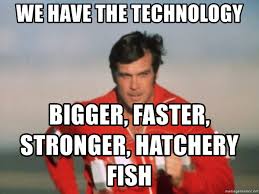
[Steve Austin. Apparently now co-opted for other causes!]
I needed reassurance and more of a nudge. After all, La Voce S2 had climbed so many “best of” lists and had charmed everyone but like five Schiit-heads, a couple DCS die-hards and a guy in New Zealand with a PS Audio DirectStream running “Muir Woods 6.0” firmware. Darko loved the S2 and ranked it somewhere between UC Berkley and Yale.
Me? We were brothers. Not me and Darko; me and La Voce S2. He had been with me since the Chord Hugo days (short-lived and clinical, those) and seen off a number of other DACs since. Musical to the core, the S2 had fought nobly to retain its rightful place in a dark mid-century media cabinet atop Symposium Fat PADZ and Rollerblock Juniors. A precarious perch to be sure, but no one could knock him off. (Oh, he wobbled on super smooth superballs™ atop my Rollerblock Juniors, but wouldn’t be felled).
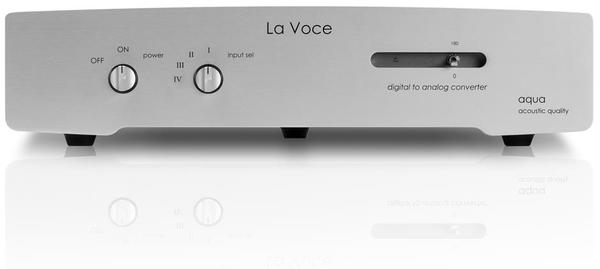

 Via electronical mail, head DAC-tor Cristian Anelli himself assured me the “La Voce S3 Discrete has been designed with Aqua’s most recent expertise earned with the Formula xHD and La Scala MKII Optologic DACs [read: The really super expensive ones the hedge fund guys buy].” Concretely, upgrades to the S2 include chiefly a Spartan-6 FPGA decoding board with 384kHz PCM and DSD128 capability (via AQ link and USB inputs; AES and S/PDIF are both 192KHz and DSD 64), a new R2R ladder board and a new USB board with improved firmware.
Via electronical mail, head DAC-tor Cristian Anelli himself assured me the “La Voce S3 Discrete has been designed with Aqua’s most recent expertise earned with the Formula xHD and La Scala MKII Optologic DACs [read: The really super expensive ones the hedge fund guys buy].” Concretely, upgrades to the S2 include chiefly a Spartan-6 FPGA decoding board with 384kHz PCM and DSD128 capability (via AQ link and USB inputs; AES and S/PDIF are both 192KHz and DSD 64), a new R2R ladder board and a new USB board with improved firmware.
Anelli continued, “The conversion system that we have developed is an important step ahead in comparison with Burr-Browns.The La Voce S3 is a pure R2R ladder FPGA-based DAC without digital filter.” (N.B. this was likely also an important step because the world’s supply of Burr-Brown 1704 chips is in deathly peril; we must act now!). “Ahem,” says Cristian, “It has a sign-magnitude ladder converter. We believe this is the best conversion technology especially for low-level signals.The absence of digital filtering means no processing of the input signal. The original digital samples are translated to the reproduced sound, preserving the transient shape and avoiding any ringing. In this way we also avoid the “inter-sample overs” problem that is vital to faithful reproduction, considering current recording studio practices.”
Wait a minute!! A “sign-magnitude ladder converter??!!!” I always wanted one of those! I’m in! “Okay,” I said. “Sign. Me. UP.”
So I chartered me and my S2 a private jet for the day (it’s a secret StereoTimes writers’ perk even the Stereophile people don’t have: join us!!) and off to Italia we went. Several short weeks later…

[Inside the StereoTimes writers’ G6 jet. Clement has excellent taste, no? Art Dudley and Vinnie Rossi are allowed on it as well… at times.]
Comparison is the thief of Joy
Every person needs his or her WHY. Cristian says his is to, “…build electronics able to create the emotional connection one experiences with live music. In our view, this can only be realized by submitting every individual component to a series of listening tests. This philosophy has driven the design of all of Aqua’s products, culminating in the choice of non-oversampling R2R ladder conversion technology. With our R2R conversion technology the sound is natural, fast, dynamic, and without the sense of compression characterizing others’ converters. We could say that our effort at Aqua is to obtain a sonic result comparable to that produced by a studio master reel-to-reel recorder. For Aqua [to be] able to reproduce the precise temporal response, dynamics and harmony of sound far outweighs technical measurements. After all, achieving the ‘analogue sound’ is what matters most.”
Well, I don’t know about the “analogue sound” as I haven’t owned a good record player in years, but even without much break in, I could tell Christian Anelli was not bullsh#$%@ng you here. “The La Voce S3 is 100 percent absolutely not a joke!” In fact, those are the very first words that came to my mind when I snuck a preliminary peak via my Shure SRH1540 headphones and ALO Studio Six headphone amp as the break-in process proceeded. Something like two hundred hours is recommended, and I obliged by letting the S3 play continuously for a good chunk of that recommended time span into my headphones. Some of that time I even listened. What I heard sounded promising; very promising indeed!
More so than with my S2, the initial hours told me there was more solid and deep bass on offer here along with the most expansive (for headphones) staging I’ve had in my headphone rig. There was real punch now; balls. Yes, the sound was decidedly ballsier than the S2. Faster paced, too. I promptly emailed Mark Sossa that the sound from the S3 seemed pacier from the get go. He averred. I think he even sent me a smiling emoji of some kind. I’ll have to check. This was good. He seemed to have calmed down somewhat since the threat.
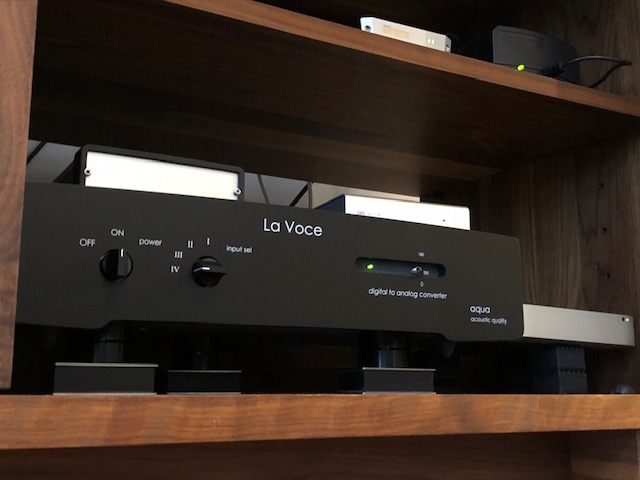
[La Voce S3 floating atop isolation devices in mid-century media cabinet]
Threatening Mark Sossa
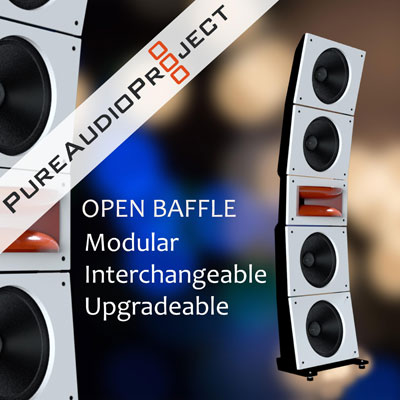 Yeah. you got that right. I threatened Mark Sossa over at Well Pleased AV, the man that turned me on to the Aqua products and facilitated my upgrade to the S3. Okay, so it was by email; I don’t know how big he is or if he does Crossfit etc. I told him in my most menacing font, “Now see here, Mark; I’m buying a used PS Audio DirectStream Junior DAC to listen to while my S2 is away being modded and here’s the deal, see! If that S3 doesn’t outperform my new (okay used) DirectStream Junior, I will not hesitate to sell the S3 on Audiogon. I’m not playing around here Mark.”
Yeah. you got that right. I threatened Mark Sossa over at Well Pleased AV, the man that turned me on to the Aqua products and facilitated my upgrade to the S3. Okay, so it was by email; I don’t know how big he is or if he does Crossfit etc. I told him in my most menacing font, “Now see here, Mark; I’m buying a used PS Audio DirectStream Junior DAC to listen to while my S2 is away being modded and here’s the deal, see! If that S3 doesn’t outperform my new (okay used) DirectStream Junior, I will not hesitate to sell the S3 on Audiogon. I’m not playing around here Mark.”
Over email, he seemed genuinely scared, though simultaneously confident it wouldn’t be the S3 getting sold. In fact, he all but told me “you’re gonna need a bigger boat!” He told me I should have bought a Senior! It’s almost as if he knew how good the S3 would be. In fact he did! He had already heard one and compared it to the S2 and felt it an all-around improvement. Sure, but he SELLS them; he has to feel that way, right?
First things First…
I know this isn’t a La Voce S2 review, but you likely don’t have a La Voce S2 on hand for comparison, and now neither do I. So first, to give you some context, let me try to paint by way of comparison with some “knowns” the way the ‘legacy’ Burr-Browned La Voce S2 sounded to me.
The S2 had a slightly tonally warm hue, impeccable tone, excellent imaging, a somewhat forward presentation, fulsome though less than perfectly clean ‘n tight bass and a bit less detail than some of the usual suspects. I noticed these things mostly upon head-to-head comparison with other DACs. The rest of the time, I was mostly too entranced by the music from the S2. This is because what an Aqua DAC really sounds like is… one second; pianist Paul Lewis is playing Haydn sonatas. Oh… listen to this adagio where it sounds sort of like Beethoven in that… where was I? See? Engaging. Aqua DACs to me, engage me in the music I’m playing more so than any other DAC I’ve owned. (Okay, my Audio Note 2.1x Signature NOS DAC of yore was able to pull off a similar feat).
Through the Aquas, I feel the artist communicating with me when music is playing and by extension, become less interested in the specifics and sonics of my stereo system. Oh, I can pay attention to those things if I’d like to, but I don’t have to. This was despite some of those DACs outperforming the Aquas sonically, in one category or another, as well as on the test bench.
For instance, listening to my Chord Hugo (the first iteration) and then switching to the S2, you might say initially the Chord was pacier, more detailed and punchier. Then as you keep listening (or as I did, anyway), all I could hear was the Chord’s detail, pace and punchiness but I was never able to commune with the artist; to watch the performance. Voices weren’t “beautiful and human;” they were “detailed” and “precise” or what have you. In other words, to me the Chord made it sound like I “owned a good stereo” rather than a vehicle to hardwire me into the emotion of whatever was played on it. So, I had the DAC of the moment; until I sold it.
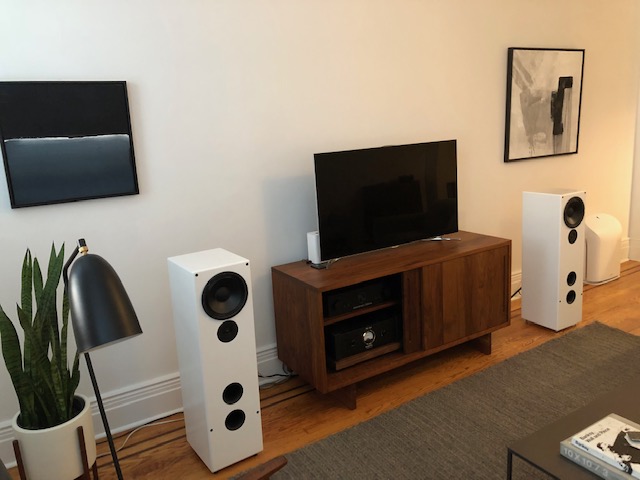
[Tekton Lore Reference speakers, Wells Majestic amp, mid-century modern media cabinet]
Then I auditioned a Benchmark HGC 3 against my Aqua S2. The Benchmark is truly a special product. It was the first DAC I’d heard that really gave the La Voce S2 a real run for its marbles. In fact, I really WANTED to like it more because it measures so flawlessly, has a brilliant engineering team (who are super friendly if you need customer service), is cute as a button taking up nearly no rack space, has super low measured jitter and even doubles as a preamp with some fancy modern proprietary volume control.
 I A/B’d the Aqua and the Benchmark for a month in both my headphone set up and my main rig. It was close. Very close. I even felt I could call the Benchmark more “accurate” though it was the antithesis of the sterile sound I got from Hugo the First. I even (at times) thought the Benchmark was slightly warm! I really loved that little! Ultimately though, he went back home to mom as I just felt that much more engaged in the music when the Aqua was on stage. Interestingly, even though the Benchmark probably measures hugely better in terms of dynamic range (among other parameters), the Aqua felt like it was the more dynamic of the two and that was maybe the biggest reason it engaged me more.
I A/B’d the Aqua and the Benchmark for a month in both my headphone set up and my main rig. It was close. Very close. I even felt I could call the Benchmark more “accurate” though it was the antithesis of the sterile sound I got from Hugo the First. I even (at times) thought the Benchmark was slightly warm! I really loved that little! Ultimately though, he went back home to mom as I just felt that much more engaged in the music when the Aqua was on stage. Interestingly, even though the Benchmark probably measures hugely better in terms of dynamic range (among other parameters), the Aqua felt like it was the more dynamic of the two and that was maybe the biggest reason it engaged me more.
Onward to Gumby! Yes; my long-term headphone system DAC the Schiit Gungnir multi-bit went head to head with La Voce S2 as well. For two or three weeks I had them duke it out hardcore in the Big Rig, consisting of a Wells Audio Majestic integrated amp, SOTM SMS-200 streamer with 12 volt S-booster linear power supply, PUC 2 Lite or Schiit Eitr USB converter and Tekton Lore Reference speakers. The upshot? I sold Monsieur Gumby.
Oh, Gumby is everything the Super Best Audio friends say it is; punchy, reliable, slightly warm, detailed and beautifully made. Its mid bass punch far exceeded the Aqua and I could see how if I listened to a steady diet of Lil’ Wayne and Motorhead, that would be very very important. The S2 sounded comparatively limp in this regard. Yes, GUMBY drove hard and hit harder. It also had more grain on vocals and strings than the S2, a shallower stage, and a kind of “tension” in the sound that sounded to me as if the musicians were ‘seated on the edge of their chairs’ all the time. This is not to be confused with lots of PRaT, which Gumby had adequate amounts of. Again, this could merely have been “accuracy” or character.
Ultimately, I was never able to relax even when listening to well recorded “relaxed” fare via Gumby. Sold! To the man in the white hat wearing a red carnation! Yes, the S2 saw off its fair share of competition; now it was the S3’s turn.
The Hawaiian Shirt That Roared
It’s vaunted. It’s hyped. A bearded man in a Hawaiian shirt with many prestigious pieces of paper on his office wall drips sweat upon its gleaming black case long into most nights wracking his purportedly genius brain as to how to eek the last oozings of specialness from his latest ‘n greatest alchemical operating systems. I’m speaking of none other than Ted Smith and PS Audio’s DirectStream Junior. (Hey, Senior is like six grand now; YOU buy me one!).
‘Twas the months before Snowmass when this comparison was made, so it was the Red-Clouded FPGA of Ted Smith against the heretofore unnamed (how bout Stracciatella 1.0?) FPGA ladder DAC-ing of Cristian Anelli.
Okay, so everyone in audio is not wrong; the DS jr. is a wonderful music making machine! Aye, lad now here’s a fight! I got to spend several weeks with a fully broken-in DS jr. before meeting my new S3 and thus became pretty familiar with it sonically. Like the S3, I felt that junior was slightly warm, with a silky though detailed presentation and great staging. Nothing stood out. It was engaging and thoroughly enjoyable to listen to. I LOVED the built in ethernet Bridge! No streamer/renderer needed and I felt the Bridge sonically outperformed the other digital inputs.
Was I really gonna prefer my new relatively hair shirt S3 to this slick ‘n shiny technological tour de force? “Sossa better be worried,” I mused between tracks. “This thing is rightfully hyped.”
After 150+ hours of headphone system break-in, I dropped the S3 into my Big Rig right next to Ted Smith’s wunderkind’s kinder. First thing I noted were the differences as compared with the sound I had for years from my S2. Chiefly, as I had surmised from my few hours of listening in the headphone system, the S3 was pacier than the S2. Whether it was a string quartet or Keith Jarrett, rhythmic interplay was more apparent, and that was unexpected from such bespoke Italian machinery. I felt it too outpointed the DS Jr. on PRaT, though junior was no slug.
I was also immediately aware the sound was more expansive than the S2 and certainly more so than junior; less buttoned-down than junior and bigger boned. I was put in mind of an abstract painter making grand bush stroke gestures rather than a careful pointillist. (I think pointillists must be careful; I know little about art). The S3 painted boldly on a big canvas. With Eric Lu’s captivating and beautifully preserved live performance of the Chopin 24 Preludes (via Tidal and Audirvana+), the piano image itself was grander and the woody resonance accompanying the low end of the instrument was more… well, wooden and resonant. The gap between pianist Eric Lu’s idea of soft and loud was also wider and more pronounced and hall echo was more aglow behind and around the instrument.
By contrast, Junior was… fine. A superb and enjoyable rendition of same. Like the Benchmark’s, it was maybe even a more “accurate” one? In any case. Junior’s piano performances were certainly very competent though more buttoned-down and reserved. They somehow felt “smaller.” Yes, I would call Junior more “even handed” and contained, and the S3 more expressive and “heart on sleeve;” even a bit ‘sloppy’ with the paint by comparison.
Continuing, the S3’s bass was more prominent/fulsome and perhaps cleaner than the S2’s. I was pretty stunned by the punch and sheer quantity of both synth and drum bass on Elena Tonra’s album Ex:Re (Tidal Rising). Check out the track “Liar” for instance, and hold on to your woofers! I could not recall the S2 having been as percussive and deep. Junior played it full, though not as expansively as the S3; closer to the vest. Throughout, Ms. Tonra’s voice remained floaty, present, pure and ethereal. The last track on this same album, “My Heart,” is a particularly illustrative example thereof.
I would say in sum that no matter what I chose to play, images, dynamics and staging just seemed that much more “dramatic”/bigger and bolder via the S3, whereas the DS Jr. came across as more measured. Mind you, I make no claim that the S3’s is the more faithful rendering of what I was hearing played back (maybe to the contrary?); merely that the manner in which the S3 presented the bits to my ears was for me, the more immersive/exhausting one. These qualities of “expansiveness” and dynamics were what won the day for me when comparing my S2 with the extremely balanced Benchmark and it was the same story here vs. the DSJ.
Now I’m a histrionic guy in general, so please factor this into my musings and take them with an appropriately sized grain of coastal elitist Himalayan pink salt. Of course and again, maybe these are colorations of sorts imparted by the NOS filter-less S2 and now FPGA’d S3, but they are colorations that connect me more to my music.
Viva La Difference(s) or lack thereof
Of note, with the La Voce S2, I definitely felt that the XLR digital input outperformed the Coax input, sounding more expansive and fuller. On La Voce S3 however, the difference between these two galvanically isolated inputs was much harder to detect. (Yes, I used a 110ohm to 75ohm converter and vice versa to try all my converters on each input)
Ah, but really the big news is the new asynchronous, wider bandwidth USB input. For maybe the second time in my experience (the USB input on the Benchmark was pretty phenomenal! I didn’t have the Gen 5 input on my Gumby), the USB input (taking signal directly from my SOTM SMS-200 without any USB conversion), seemed the equal of “cleaned” signals to the other inputs! This was somewhat groundbreaking for me, so used to using all manner of boxes and cleaners for USB am I.
My fave USB cleaners, the PUC 2 Lite and the newly arrived Schiit Eitr, both gave me their take on things, with the PUC adding a tiny bit of warmth, expansiveness and gravitas to the proceedings and the Schiit (via BNC/RCA) sounding a touch cleaner and more pristine on top, though with a bit less (cleaner/tighter?) low range. The Singxer F-1 once again proved its exceptional merit, though placed third in the hierarchy musically. This converter fared better musically for some reason with the DS Jr.
The S3’s USB input seemed to almost split the sonic difference between my two fave converters and thus far I’ve preferred it to RCA or AES via “USB cleaners” for much of my listening. That could change. It often does over time.
Meanwhile, La Voce S3, which looks identical externally to the S2 (read: Girlfriend doesn’t know how much was spent on said upgrade or indeed if there even was any such upgrade), has operated continuously and flawlessly in my system and I expect it to continue to do so until time immemorial, arrival of the S4, or until Ted Smith comes out with the proprietary Humuhumunukunukuapua`a 7.0 firmware.
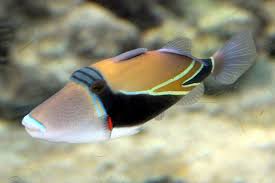
[Pic 4 caption: A Humuhumunukunukuapua`a, Hawaii’s state fish, in its native environment]
The (Ballsy) bottom line
Perhaps more so than with many components, good NOS and filter-less/R2R DACS like the S3, the Audio Note’s, etc. have something different in their sound. Cheaply made bad ones just sound soft and mushy. But the good ones retain almost all the detail and precision you’d expect from a traditional well-measured filtering oversampling “modern” DAC architecture even as they tend in my experience toward a slight tonal warmth and delicacy.
After all, do I REALLY wanna know just how utterly shite that bootlegged Dylan gig from ’75 was? Yes I would; if I were re-mastering it. But to date no one has asked me to do so. As such, I am willing to sacrifice what I perceive to be some fine shavings off what can be the bitter bare bones truth of a recording for the sake of the greater musical enjoyment of all of the less than terrible ones.
Aqua’s S3 represents for me, if not a quantum leap forward from the already very musically consonant and good-at-what-it-did S2, a meaningfully, more well-rounded, improved version of same; adding to the former shades more heft, detail and dynamics as well as an improved way with timing. In other words, it’s faster, punchier and more fun!
Plus, the modular nature of Anelli’s DACs allows for upgrades as they become available. I can’t wait for Stracciatella 2.0!
Happy New Year! And as always, I bid you peace.


David Abramson
Footnote: Mark Sossa is safe. Thanks for asking. He is in a secure, undisclosed location. I sold the DirectStream Jr. but I’m not gonna lie; I still miss her… I will buy a slim fit Hawaiian shirt from Jeff Bezos in memoriam. Much cheaper.
Specifications:
Aqua Acoustic Quality La Voce S3 Discrete DAC
-High performance proprietary FPGA-based digital decoding without digital filter
-Discrete R2R ladder DACs with low noise precision resistors
-Galvanic isolated S/PDIF – AES/EBU Digital input
-Jitter free digital interface AQlink (I2S protocol), uncompromising digital connection to La Diva cd transport
-Zero S/PDIF Jitter design, digital receiver stage PLL (phase locked loop) technology
-Discrete Regulator (MOSFET, J-FET, BJT) for analog and digital DAC’s power supply
-RJ45 (AQlink) input connection, employs CAT6 cable
-2 separate low noise power transformers, one for the analog and one for the digital section
-MODULAR DESIGN with upgradeable multi board system
-Fully discrete analog stage, not even a single Op-Amp is used
-Proprietary USB Firmware / driver: Apple MAC OS – Linux OS : USB asynchronous native support, no need to install drivers software
-Fully upgradeable asynchronous USB module with resolution 44.1kHz to 384kHz PCM up to 24 bits, DSD64, DSD128, operates with computers running OSX 10.7 and above, WINDOWS 10, 8 , 7 and XP ASIO – WASAPI bit perfect high-speed
Retail Price: $4,750.00
Address:
AQ TECHNOLOGIES S.r.l.
Registered Office : Via Luciano Manara, 17 – 20122 Milano
Operation Office : Via Adobati, 23 – 24022 Alzano Lombardo (BG)
Italy VAT : 08602220967
Website: www.aquahifi.com
Well Pleased AV (US Distributor)
1934 Old Gallows Rd
Suite 350-R
Tysons Corner, VA 22182
Phone: +1-703-750-5461
Email: mark@wellpleasedav.com
Website: www.wellpleasedav.com
Stereo Times Masthead
Publisher/Founder
Clement Perry
Editor
Dave Thomas
Senior Editors
Frank Alles, Mike Girardi, Key Kim, Russell Lichter, Terry London, Moreno Mitchell, Paul Szabady, Bill Wells, Mike Wright, Stephen Yan, and Rob Dockery
Current Contributors
David Abramson, Tim Barrall, Dave Allison, Ron Cook, Lewis Dardick, Dan Secula, Don Shaulis, Greg Simmons, Eric Teh, Greg Voth, Richard Willie, Ed Van Winkle, and Rob Dockery
Music Reviewers:
Carlos Sanchez, John Jonczyk, John Sprung and Russell Lichter
Site Management Clement Perry
Ad Designer: Martin Perry






Be the first to comment on: Aqua Acoustic Quality La Voce S3 Discrete DAC